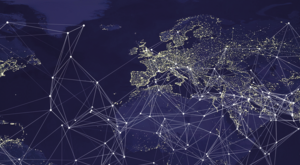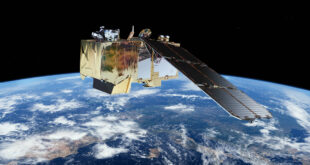In a captivating interview with James Slifierz, Co-founder and CEO of SkyWatch, Dr. Jessica West delved into the rapidly growing world of commercial Earth observation (EO). The conversation shed light on the innovative role of SkyWatch’s software platforms in making accessible and useable the vast amounts of commercial EO data to individual and organizational users around the world – on demand – emphasizing the transformative potential of Earth observation data. The highlights of the discussion ranged from the importance of data accessibility and usability to the role of artificial intelligence (AI) and the critical issue of data veracity and security.
Unleashing the Power of Earth Observation
The interview kicked off by highlighting the significance of Earth observation and its impact on various industries. James Slifierz emphasized that Earth observation is not just about pretty pictures of our planet; it is a vital source of data that enables us to better understand and address critical global challenges. Whether it’s monitoring climate change, managing resources, or enhancing disaster response, Earth observation plays a pivotal role in providing actionable insights. But these benefits are not being fully realized. Likening Earth observation to GPS circa 2003, James highlighted the need for standardization, accessibility, and affordability to better integrate EO data into everyday life. Referring to “blue ocean” uses, he described the excitement of people who are creating new uses for Earth observation that have never exited before.
The Data Challenge: Accessibility and Usability
One of the key challenges in Earth observation is dealing with the massive volume of data generated. Slifierz referred to this as the “heavy data problem,” where large, high-resolution images need to be processed and made ready for analysis, and many of them are white noise, marred by cloud coverage. The need to extract meaningful information from this vast amount of data requires efficient data management, advanced algorithms, and robust processing capabilities. The conversation also touched on the issue of data accessibility, discussing the limitations of downlinking data from satellites to Earth, and the high costs associated with data acquisition.
The Role of Artificial Intelligence
AI emerged as a game-changer in the Earth observation domain. Slifierz highlighted how AI has transformed the processing and analysis of satellite imagery. By automating tasks that were previously done manually, AI has enabled the rapid and efficient processing of data, making it analysis-ready for users. The discussion touched upon practical AI applications, such as automating spatial calibration and enabling autonomous space systems. The potential of AI in enhancing data search engines and improving data labeling for easy retrieval was also highlighted.
A New Licensing Model
Licensing and the veracity of data emerged as critical concerns in the Earth observation industry. The interview shed light on the challenges posed by traditional licensing regimes, are often outdated and hinder the usability and accessibility of data. Slifierz emphasized the work of SkyWatch to develop a modern, open licensing framework through TerraStream, which aligns with the evolving industry, drawing parallels to applications such as Spotify in the music industry.
Building Trust in Earth Observation
The interview underscored the importance of trust in the Earth observation ecosystem. Slifierz highlighted the need for transparent and accountable practices to maintain trust among users and providers. Robust verification processes, compliance with regulations, and cybersecurity measures were identified as crucial elements in safeguarding the integrity and security of Earth observation data. The discussion also touched on the need for users to verify possible AI-generated insights from data by being able to see source images.
The discussion also touched upon the issue of data veracity and the potential risks of data manipulation. As synthetic data creation becomes easier, ensuring the authenticity and reliability of Earth observation data becomes a pressing challenge. Using the example of an automated tractor relying on EO data of crops to guide its work, James pointed to the potential for malicious changes to the data to wreak havoc.
The Future of Earth Observation
The conversation concluded with an outlook on the future of Earth observation. Slifierz envisioned a world where innovative new Earth observation applications become as readily accessible as weather forecasts and users can interface with it using natural language queries. He emphasized the need for vertical-specific applications, where access to EO data is tailored to address specific industry needs. The aim is to enable users, whether individuals or organizations, to easily access and utilize Earth observation data to solve real-world problems.
 SpaceWatch.Global An independent perspective on space
SpaceWatch.Global An independent perspective on space





